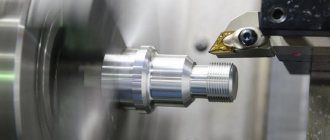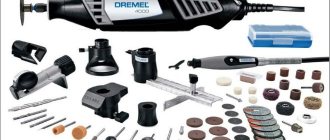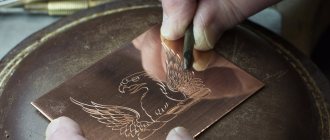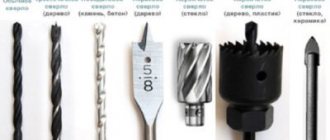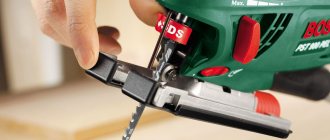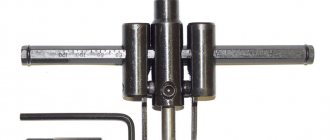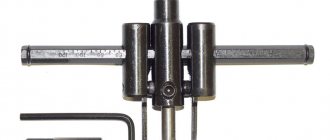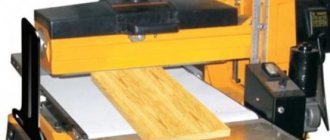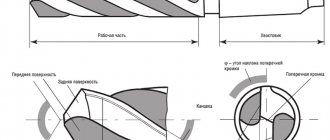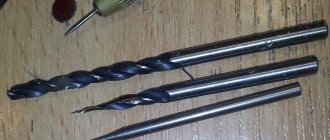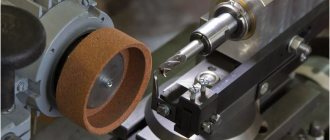Let's say you have a working CNC machine that you just purchased, but don't yet know enough about it. Let's now assume that this is a CNC milling machine for metal, and that first of all you will be interested in milling metal that can be easily processed.
Chances are, you're itching to start milling all sorts of cool parts, building a tool magazine, or maybe assembling a Colt 1911 pistol. You can build almost anything with CNC, and you're full of ideas to get started on your favorite projects.
Main components of a CNC machine
A CNC machine consists of the following key components:
- data input devices;
- BUS (machine control unit);
- actuator;
- drive systems;
- feedback systems;
- control panel.
The object processing program is loaded into the machine through the data input device.
Input devices are usually magnetic tape readers, punched tape readers, and computers operating via an RS-232-C port.
The BUS controls the unit, performing the following operations:
- reads and decrypts code instructions entered into it;
- Performs circular, linear and spiral interpolation to generate axis motion commands;
- transmits axis movement commands to the amplifier circuits to control the axis mechanisms;
- receives feedback regarding the positions and speeds of all drive axes;
- turns coolers or spindles on and off, changes tools, and performs other auxiliary functions.
CNC machines typically have movable tables and spindles that control speeds and positions. The actuators control the spindles in the Z-axis direction and the tables in the X- and Y-axis directions.
Drive systems include amplifier circuits, drive motors, and ball screw bearings (ball screws). The BUS sends signals about the speed and position of each axis to the amplifier circuits. These signals are then amplified to drive the drive motors. These motors rotate the ball screw to adjust the desired position of the work table.
The feedback system (also known as the measurement system) has built-in sensors, also known as transducers. They constantly monitor the speed and position of the cutting tools. Signals from the sensors are sent to the BUS, where the difference between the original signals and feedback signals is used to generate the next series of signals.
The operator can move the control panel to a convenient position. The display will show commands, programs and other necessary information.
What knowledge do you need to have to work with a CNC machine?
To successfully work on a CNC machine, you must be able to perform the following operations:
- create models of parts in graphic editors;
- install programs in the unit’s RAM;
- set optimal modes and control parameters for microstepping motors.
As work progresses, it will be necessary to visually monitor all technological operations through a panel that displays all current information in real time.
The most common software control systems today are Linux CNC, USB CNC, Mach3, OSAI, Fanuc, Rich Auto, OSP, Sinumerik, Heidenhain. All of them are more or less the same type, and only Heidenhain differs noticeably from the others in its management.
Basics of working on CNC machines (what skills you need to have)
The operator of a CNC machine requires less skill and experience than an operator of a similar traditional type device. Programmable equipment successfully copes with the following tasks:
- improves workflow productivity;
- guarantees the most accurate and high-quality processing;
- ensures the safety of human labor and solves numerous problems of production culture.
In fact, the operator must simply control the execution of those processes that were incorporated into the unit at the programming stage.
Advantages of contacting Boris-88 LLC
High-quality work performance
Prompt execution of orders of any complexity
An integrated approach to problem solving
Affordable cost of services
How to learn to work on a CNC milling and lathe for wood and metal?
The use of CNC turning and milling machines is taught in colleges. They pay quite a lot of attention to both theory and practice. However, the internship completed before college may not meet the requirements that a particular employer will impose in the workplace. Therefore, many employers have vacancies with on-site training, where applicants are primarily required to have knowledge of theory.
The theory can be taken on the Internet. The minimum duration of the course via Skype is two weeks. In three days, contrary to advertising promises, you cannot learn anything.
Distance courses are good because students are given a lot of tasks to write control programs for machine tools and create vector images.
Service price
The main factors determining the cost of work are:
- difficulty of milling;
- number of technical parameters (dimensions, design, type of metal, processing accuracy);
- order volumes.
To find out in more detail how much it will cost to process metal on milling machines in Moscow, you can contact StalList consultants directly and specify the parameters required for the calculation by phone. This can also be done remotely using the appropriate form on the company’s website. The minimum cost of milling processing is from 50,000 rubles.
How to work on a CNC machine?
Work on a CNC machine is carried out in the following sequence:
- The part processing program is entered into the control unit.
- The data is processed in the BUS. There, motion commands are prepared and sent to the drive system.
- The speed and movement of the unit blocks are controlled by the drive.
- Information about the speed of movement and the position of the axes is recorded by a feedback system that sends signals to the BUS.
- The BUS compares each incoming signal with the original one. If there are errors, they are corrected.
The operator controls the process all this time through a control panel with a display.
After pressing the power button, the unit will begin initialization. This term refers to the determination of the initial coordinates of the spindle position. All models of CNC machines have a constant zero point, the so-called machine zero. To perform initialization in manual mode, you need to press the “Home” button, but it is much more convenient to carry out this action in automatic mode. The working parts of the unit will alternately move along each axis until the limit switch, and movement will begin from the Z axis. As soon as the spindle reaches the extreme position along one of the axes, the limit switch will operate and the machine zero will be initialized. An unchangeable machine zero is needed so that the operator can set not one, but many zero points for processing the workpiece, and these points would be located in any desired location on the workbench.
For models with four or three axes, machine zeros are located in the corners of the tables. It is in relation to these points that all other basic positions of the device are adjusted.
For metal
All CNC machines for metal operate on a similar principle. Having dealt with one device, you can safely work with any new models. In addition to the instructions from the manufacturer, it makes sense to search the Internet for materials on working with g-codes and m-codes.
Part design
The design of the part is carried out in 2D or 3D format in a CAD program. In Russian, the abbreviation CAD stands for “computer-aided design system.”
CNC programming
A part created in a CAD program must be converted into g-code that the machine can understand. This happens in the CAM program. In Russian, the abbreviation CAM stands for “computer-aided production system.”
Machine setup
To set up the machine you need to do the following:
- Make sure that you have filled the coolant and oil to the maximum and in strict accordance with the instructions.
- Make sure that foreign objects do not enter the work area.
- Turn on the compressor and check that the pressure in it is exactly as indicated in the instructions.
- Connect the device to the power supply and start it up. Typically, the power button is located on the control panel in the upper left corner, and the main switch is located at the rear of the unit.
- Load tools into the carousel in the sequence specified in the CNC program list. If the unit has only one tool, the cutter must be installed in the spindle.
- Firmly secure the part on the table or in a vice.
- Set the correction indicator for the tool length. The tools must be moved to the top of the part in the sequence specified in the CNC program, and then the correction values must be set.
- Set the correction for the X and Y axes. After installing the vice or other parts, adjust the correction for the installation of the workpiece in order to find the starting points of X and Y.
After this, all that remains is to load the CNC program into the control system of the unit via a USB drive.
Part management and production
After setting up the machine, the production process is carried out in the following sequence:
- For a test run, the program is run in the air so that the tool operates at a height of approximately 5 cm from the object.
- The program runs when the tool makes contact with the workpiece, monitoring for error messages.
- Adjust the offsets and check the characteristics of the workpiece. Adjust tool length corrections to ensure that the workpiece meets the specified parameters.
Upon completion of the work, you need to remove the workpiece from the vice, remove the tools from the spindle, clean the work area and turn off the unit.
On wood
A CNC machine designed for working with metal can also handle wood successfully. But a unit that was initially oriented towards working with wood will not be able to cut metal efficiently - it will only perform shallow processing of the metal surface.
Part design
Designing a wooden workpiece in a CAD program is practically no different from preparing a model of a metal object. However, beginners are recommended to start with wood: mistakes are inevitable during the learning process, and wood is cheaper than metal, so spoiling the workpiece will not be so scary.
CNC programming
Metal working machines typically contain more electrical components than their wood working counterparts. For operators with little experience, it is more convenient to first learn woodworking programming.
Machine setup
The setup involves using one of three modes: manual control, manual data entry or automatic control. The key phase of setup is to correctly set the zero points in accordance with the machine instructions.
Part management and production
A woodworking machine is a little easier to operate than a metalworking machine. However, many beginners forget to wear safety glasses or assume they are not needed. This is a mistake: wood chips can cause just as serious eye injuries as metal particles, so it's important to follow safety precautions.
Purpose of milling processing
Using various types of cutters, you can mill parts more accurately and efficiently. It can be a variety of materials, but the most common treatment is on metals. And with the help of modern machines equipped with CNC systems, it is possible to reduce the amount of defects, as well as control using simple numerical programs. Now the cutter has been replaced by a blade as a working tool, which has reduced the likelihood of defects by making workpieces as accurately as possible.
Why is milling needed in processing? With its help, you can cut metal, grind, apply special patterns, engrave, as well as do turning and other work in various types of activities. The set includes several multi-tooth cutting cutters, and their mounting in machines determines the horizontal or vertical type of work. Milling at a certain angle can also be used in production, for which the cutter is first installed in the required direction. Depending on the type of product being processed, this milling has several methods. But it is worth noting that a considerable number of different cutters are used, in particular cylindrical, end, end, gear, shaped, and also more complex ones.
The areas of application of milling are quite diverse; it can be used in metalworking, mechanical engineering, jewelry production, woodworking, and even in design and architecture.
Metal processing by milling is carried out regardless of its strength. Milling cutters are selected based on the type of processing required; for planes, cylindrical or end-face types of cutters are used; in the latter, asymmetrical cutting patterns are selected. That is, if the parts are of the correct rectangular, square or similar shape, then these two methods are most often used. The same profile part can be made with a cylindrical cutter or from the end.
Milling cutting of aluminum is considered quite popular nowadays, since aluminum is widely used in exclusive design, interior design, advertising elements, camera equipment, etc. Due to its lightness, strength and low melting point, it is widely used and it is not difficult to cut out various products. On the details of souvenir products, marketing and kitchen products, modern high-tech machines can make inscriptions, patterns, relief, etc. At the same time, they are obtained without burrs, the correct size and shape, as well as with perfect edges.
Volumetric milling of plastic has gained considerable popularity these days, especially in 3D form. These are quite popular services that are used for industrial products and housings. Moreover, the parts are made quickly, since the milling and engraving type machine works quite quickly, and the price for the work performed is low. Both splined and shaped and gear parts are processed, as well as processing of holes, ends, and grooves. Decorative and other parts, molds for casting, polymer cases and much more can be milled from plastic in 3D form, creating original and desired product shapes.
10 things that are useful for beginners in working with CNC
The following tips will be useful for beginners:
- Buy quality cutters from reliable manufacturers. Ideally, let it be a carbide. But if you have a limited budget, you can first make do with high-speed steel. For beginners, the optimal cutter sizes are: 4 mm, 6 mm, 13 mm. For steel, 4-flute cutters are suitable, for aluminum - 3- or 2-flute. Be sure to protect your eyes while working with glasses. While you gain experience, your cutters will often fail, but this is normal. Also purchase a set of twist drills.
- Buy a set of parallels, a set of clamps and a vice. The vice is designed to last for many years. If you buy a cheap Chinese vice to save money or do not secure the workpiece properly, all the work will go down the drain. The official name for "parallel" is parallel pads.
- Use fog or coolant. If coolant or a fog generator is not included in the machine design, purchase them separately. Most likely, you will first have to spend a lot of time setting up the coolant. But if you are too lazy to do this, overcutting the chips can lead to breakage of the cutter.
- Learn how to use a CNC controller. First you need to train on the X and Y axes, without affecting the Z. In this case, you cannot use G00, otherwise the unit will move at maximum speed and the limit of its capabilities. It is optimal to set G01 F20, while the indicator “20” will correspond to the value that you set yourself (for example, inches or centimeters).
- Make it a habit to use a cutter length measuring device. To base the spindle on the workpiece, use the edge finder. If the unit does not understand where the tip of the cutter is, there is a risk of equipment failure. As soon as the workpiece is installed in the vice and the cutter is in the spindle, you need to set the zeros.
- Adjust the machine and vice using the dial indicator. Check the position of the vice every time before starting work.
- If you are a beginner, don't try to work on stainless steel right away. Practice on mild steel, brass or aluminum first. If you start cutting difficult materials right away, the cutters will wear out and break too often.
- Get yourself several sets of aluminum step jaws. Use a saw to cut pieces of material so that their dimensions are slightly larger than the jaws of the vice. Then make passes with the end mill until you get a rectangular parallelepiped. Then adjust this figure to the dimensions you need, drill and countersink mounting holes in it.
- Master CAD and CAM programs in which you will write g-codes. Many programs have quite intelligible Russified manuals, as well as active communities of users on the Internet, always ready to help beginners.
- Learn in advance how to perform an emergency stop of the machine and restart it after an unplanned shutdown.
To see how prepared you are, try doing a Turner Cube (also known as a Meta Cube) on the machine. This figure consists of several nested cubes with holes, with all the inner cubes touching the outer one only with their vertices. Before equipping production with CNC machines, this is exactly the kind of figure that turners and milling operators were asked to perform during the hiring process in order to assess the level of their skill.
So now you have a basic understanding of how CNC machines function. On the Internet you can find many training videos devoted to different stages of setting up the unit and processing workpieces. If you have little experience yet, start with wood processing - it’s easier than creating metal products, and the material itself is cheaper.
- October 03, 2020
- 5861
Let's first consider some of the nuances of metal milling.
One of my friends has been cutting metal for some time now with his CNC machine from China, which has a working field of 400x600 mm. How he does it? You just need to follow the following parameters:
- depth per pass;
- feed speed;
- Select the correct end mill and its cooling.
However, metals can be cut without cooling.
When milling metal you need to be extremely careful, especially with aluminum, this material begins to melt at a temperature of about 648 degrees Celsius, and if you use an end mill rotating at high speed (about 13,000 rpm), it will get very hot and melt the end workpieces during the processing process. Aluminum is a low-melting metal. Compared to steel, which melts at 1,150 degrees Celsius, some CNC metal machine operators will say that mild steel is easier to cut than aluminum simply because the cutter can operate at a slower feed and “gnaw” through the material.
